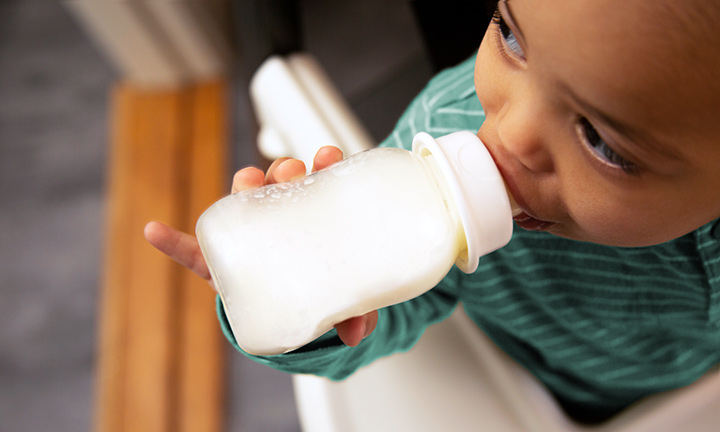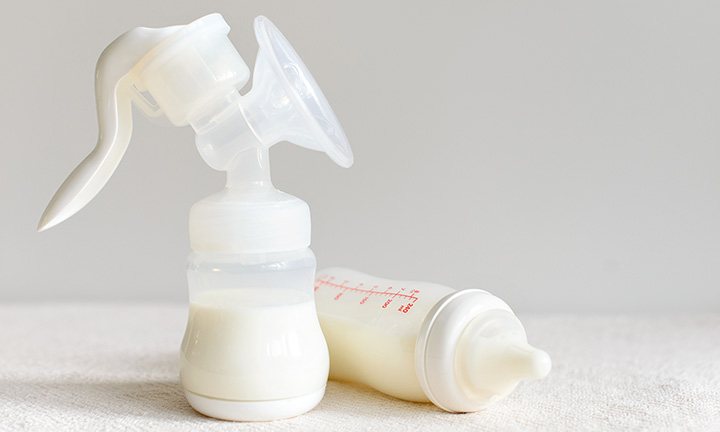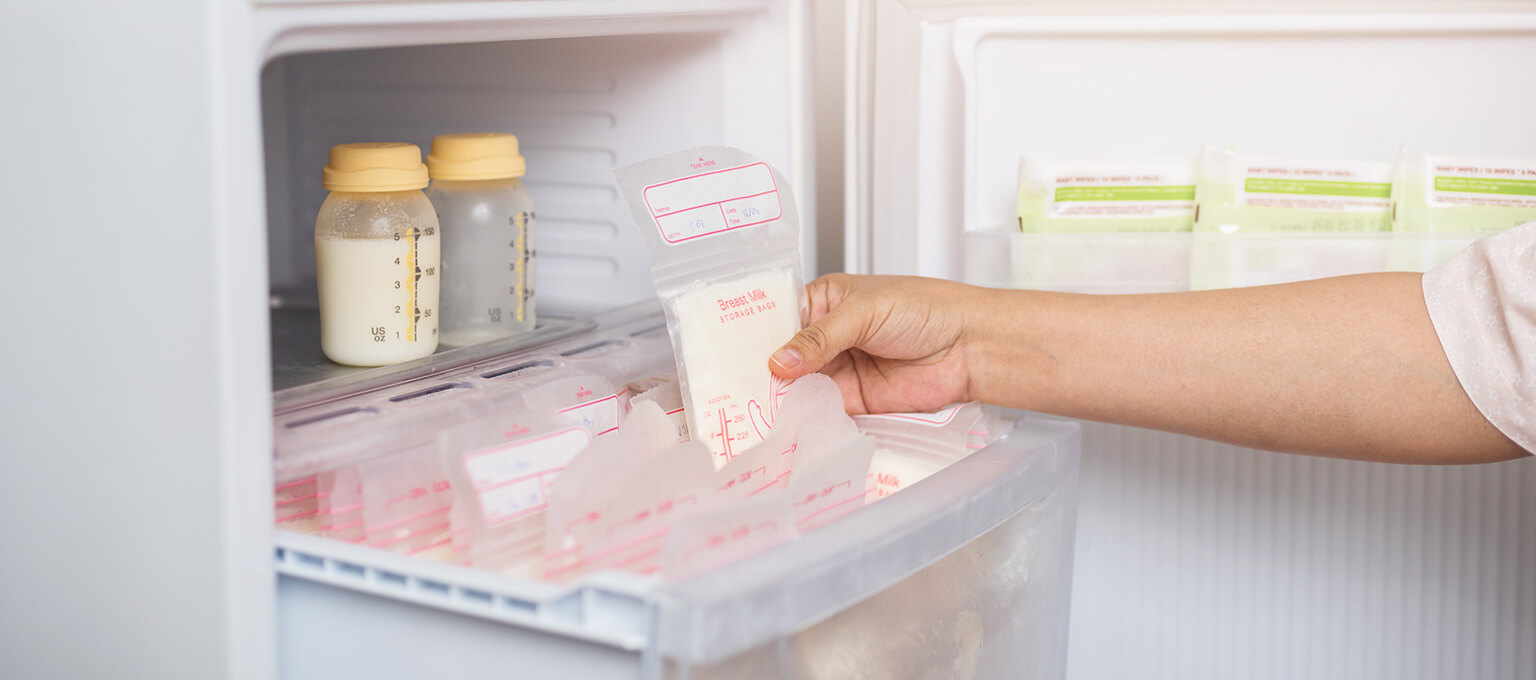
How to Breastfeed: What to Know Before You Get Started
Learning how to breastfeed can feel overwhelming at first, but with a little guidance, it often becomes more manageable. While breastfeeding is a natural process, it usually takes time, practice, and support to feel confident.
In this guide, you’ll find real-world tips and calm, practical advice on everything from when you’ll start producing milk to common breastfeeding issues, how to tell if your baby is getting enough milk, and how to handle the first few feedings. You’ll also find expert-backed insight into both the benefits of breastfeeding and how to approach it step by step.
Here’s a quick overview of what you’ll learn:
Milk production basics. When it starts, how it works, and how to know it’s going well.
Step-by-step breastfeeding tips. From skin-to-skin contact to proper latch and let-down.
Early feeding cues. Spot signs of hunger before your baby cries.
Is your baby getting enough? What to look for—from diaper output to weight gain.
Common challenges. What’s normal, what’s not, and when to ask for support.
How long and how often to feed. What to expect during the early weeks.
Now that you have the essentials, let’s explore each step in detail to help you confidently begin your breastfeeding journey.
What Makes Breast Milk So Effective?
Breast milk is uniquely made to support your little one’s health and development from the start. Its composition naturally adjusts over time to meet your baby’s changing needs, making it a dynamic and responsive source of nourishment.
During lactation and breastfeeding, your body produces a fluid rich in nutrients, antibodies, and enzymes, all tailored to help protect and nurture your baby. This means that every time a lactating parent breastfeeds, they’re offering more than just a meal; they’re supporting growth, digestion, and immune protection.
Whether you’re in the early days or further along in your breastfeeding journey, breast milk remains one of the most effective ways to support both your baby’s health and your own recovery.
What Is the Difference Between Colostrum and Breast Milk?
In those first few days when you start breastfeeding, you may notice your milk is more of a thick, yellowish substance. If you start wondering if that’s what breast milk is supposed to look like, don’t worry—what you're seeing is normal. At this stage, you’re producing what’s called colostrum, which has many benefits for your baby. Colostrum is your little one’s first meal and offers protection against diseases. It contains more protein and antibodies than mature breast milk but less fat and calories.
Colostrum is only produced for a few days after birth. As breastfeeding continues, your milk transitions to what’s called mature milk, which contains more fat and calories to support your baby’s growth.
Here’s how your breast milk might change in the first week or so after giving birth:
First, you’ll notice your milk is getting creamier. This transitional milk results from your breasts shifting to producing mature breast milk.
Mature breast milk comes into total production at the end of the second week after your baby is born.
Mature milk is thinner than transitional milk when it’s first secreted, not unlike skim milk, but it becomes creamier when fat is released later during feeding.
What Are the Benefits of Breastfeeding for Your Baby?
One important advantage of breastfeeding an infant is that it provides a simple and natural way to help your baby grow and stay healthy. That’s why breastfeeding is recommended by health experts worldwide.
Breast milk (also called human milk) contains everything your baby needs in the early months. It includes:
Water
Sugar (lactose)
Easily digestible proteins (whey and casein)
Healthy fats
Vitamins and minerals
Enzymes that help with digestion and nutrient absorption.
This natural combination creates a well-balanced, easy-to-digest meal for your baby. But beyond basic nutrition, here are some of the most recognized benefits of breastfeeding:
What Are the Benefits of Breastfeeding for the Parent?
There are many advantages of breastfeeding for mothers, some of which begin right after birth and others that support their health over time.
In the weeks after delivery, breastfeeding may help lower the risk of postpartum depression, especially when it’s going well and you feel supported. It also supports your long-term health by lowering the risk of:
Breast, ovarian, endometrial, and thyroid cancers
Osteoporosis
Type 2 diabetes
Cardiovascular disease
High blood pressure
High cholesterol.
Beyond physical health, breastfeeding may support your emotional wellbeing and your connection with your baby in meaningful ways:
Supports postpartum recovery. Breastfeeding helps your body release oxytocin, a hormone that encourages your uterus to contract and return to its normal size. This may also reduce vaginal bleeding after delivery.
Encourages bonding. Breastfeeding enhances parent-baby bonding because it (along with skin-to-skin contact) stimulates the release of oxytocin, the “love hormone.” This increases your innate feelings of attachment and protection toward your baby.
Pain control. When your baby nurses and stimulates the release of oxytocin, you may experience a wave of euphoria, which can help diminish pain. So, although you’ll still feel pain after delivery, breastfeeding can help you cope.
Convenient and cost-saving. Breast milk is ready when your baby is. There’s no need to carry supplies or prepare bottles. While there may be some early costs like nursing bras or nipple cream, breastfeeding is typically more affordable than formula over time..
Weight loss. Some evidence suggests that breastfeeding can aid in postpartum weight loss. Breastfeeding burns calories, and for some parents, this may help with losing weight gained during pregnancy. However, not everyone experiences weight loss while breastfeeding. Other factors, like sleep, activity level, and nutrition, also play a role in how your body changes during this time.
When Will You Start Producing Milk?
Your body begins getting ready for breastfeeding early in pregnancy. As hormone levels shift, your milk ducts begin to form, and you might notice breast tenderness or changes to your nipples. These are common early signs of pregnancy, and they’re part of your body preparing for feeding your little one.
If you’ve been wondering, “When will I start producing breast milk?”, you might be surprised to learn that colostrum, the first form of milk, can start being made as early as 16 weeks into pregnancy. This early milk is rich in antibodies and will be the first thing your baby eats after birth.
There’s no need to start this process actively; your body takes care of it on its own as part of normal pregnancy development.
How to Know If You’re Producing Enough Milk?
It’s completely normal to wonder how feeding is going, especially in the beginning. Most parents produce enough breast milk without any issues; however, it is helpful to know what signs to look for.
One way to check is by keeping an eye on diapers. Babies who are getting enough to eat will usually have five to six wet diapers each day once milk has fully come in.
Your baby’s healthcare provider will also monitor weight gain during checkups, which is another important indicator that things are going well.
How to Breastfeed: Step-by-Step
Starting breastfeeding can feel a little overwhelming, but these simple steps can help guide you and your baby toward a smoother experience. Right after birth, holding your baby skin-to-skin is a powerful way to begin. It helps regulate their body temperature, promotes bonding, and encourages your baby’s natural reflex to feed, making it easier to begin lactation and breastfeeding.
Here’s a step-by-step breakdown to help you feel more confident as you begin:
These steps can help you feel more prepared during those early feeds. And if you encounter challenges, don’t hesitate to reach out to a lactation consultant or your healthcare provider for additional support with breastfeeding.
What are Common Breastfeeding Struggles?
For some, breastfeeding may come easily. For others, it can take time and patience. Both experiences are completely normal. Babies and parents often need a little while to adjust to the new routine—and that’s okay.
Here are some common breastfeeding issues that can show up, especially in the first few weeks:
Pain or discomfort. Some latch-on pain is normal at first, but if pain lasts through feedings or nipples stay sore, talk to your healthcare provider or a lactation consultant.
Frequent feeding. Breastfed babies often eat every two to three hours since breast milk digests quickly. This early pattern can feel demanding.
Diet concerns. Limit high-mercury fish, caffeine, and alcohol. If you have a drink, wait at least two hours before breastfeeding.
Health conditions and medications. Some conditions or treatments may make breastfeeding unsafe. Always check with your provider if you’re unsure.
Previous breast surgery. Breast reductions or other surgeries can affect milk supply. A lactation consultant can help with strategies.
Most breastfeeding issues can be resolved with support, patience, and time. You're not alone—and help is always available.
What Happens During the First Few Feedings?
The first few times you breastfeed might feel unfamiliar, and that’s completely normal. During these early feeds, your newborn is learning to latch and suck, and your body is beginning to produce colostrum, the nutrient-rich milk that helps protect your baby from illness.
Newborns may feed often, sometimes every one to three hours, as they adjust to life outside the womb. These frequent, short feedings help stimulate your milk supply and support bonding.
Here’s some supportive breastfeeding advice for new parents to make those first feeds a little easier:
Get comfortable. Use a supportive chair and try deep breathing to help you relax while nursing.
Ask for help early. A lactation consultant can guide you through positioning and latch.
Room-share with baby. Keeping your baby in the same room (but in a separate crib or bassinet) makes night feeds easier in the early months.
Avoid pacifiers in the beginning. Experts recommend waiting a few weeks before introducing one so breastfeeding can get off to a strong start.
Care for your nipples. A proper latch helps prevent soreness and cracking. Use purified lanolin for moisture, and check with your provider if you see signs of mastitis.
Encourage milk flow. A warm compress before a feed can help stimulate the let-down reflex.
Lean on others. Community matters. Other parents’ tips and support can help you feel more confident and less alone.
These first feedings are a learning curve for both of you. With support and time, it usually gets easier, and every feed is a step forward.
How to Know When Your Baby is Hungry
When it comes to breastfeeding, timing matters. Crying is actually a late hunger cue—and a crying baby may have more difficulty latching. That’s why it helps to notice earlier signs that your baby is ready to eat.
Some common hunger cues include when your baby:
Looks alert
Bends their arms
Closes their fists
Brings fingers to their mouth
Makes sucking motions.
Catching these signs early can lead to smoother feedings. Once your little one is full, they’ll usually relax, close their eyes, and let their arms and legs rest loosely.
Learning your baby’s cues takes time—but over the days and weeks ahead, you’ll likely start to recognize their rhythm more easily.
When Do Babies Stop Breastfeeding?
Healthcare professionals recommend exclusive breastfeeding for about the first 6 months, meaning no formula or solids during this time. After that, solids can be introduced while breastfeeding continues to support your baby’s nutrition and immune system.
Many parents continue breastfeeding up to 1 year or beyond, depending on what works best for their family. There’s no exact age when babies need to stop.
Weaning often happens gradually. You can learn more in this guide on when to wean a baby off breast milk.
Signs your baby might be ready to wean include:
Turning away from the breast or bottle
Getting easily distracted during feeds
Preferring solids and using a cup independently.
There’s no right or wrong time to stop—follow your baby’s cues and do what feels right for you both.
FAQS AT A GLANCE
Start with skin-to-skin contact, help your baby latch on, and try to remain relaxed. Ask a lactation consultant or healthcare provider for support early on. They can guide you through positioning, latch, and early feeding tips.
The Bottom Line
Breastfeeding is a learning experience, for both you and your little one. It may take time, and you might need support along the way, but many parents find it’s worth the effort.
Breastfed babies are often less likely to develop common infections, allergies, or more serious conditions like SIDS and childhood diabetes. For parents, breastfeeding can support recovery after birth, promote bonding, and may reduce the risk of certain cancers and chronic illnesses.
Every feeding helps build your connection and supports your baby’s health. If you have questions or concerns, don’t hesitate to speak with your healthcare provider or a lactation consultant.
And don’t forget, you can earn rewards for Pampers diaper and wipes purchases with the Pampers Rewards app.
- American Academy of Pediatrics. Caring for Your Baby and Young Child: Birth to Age 5, 7th ed. (New York: Bantam Books, 2019).
- Mayo Clinic, Walter J. Cook, M.D. Kelsey M. Klaas, M.D. (Authors). Guide to Your Baby’s First Years, 2nd ed. (2020)
- ACOG. Breastfeeding Your Baby.
- CDC. Pumping Breast Milk.
- Cleveland Clinic. Benefits of Breastfeeding.
- Cleveland Clinic. Breastfeeding.
- Healthy Children. A Parent’s Guide to Safe Sleep.
- Healthy Children. Fish & Pregnancy – What’s Safe to Eat.
- KidsHealth. Breastfeeding vs. Formula Feeding.
- KidsHealth. How Often to Breastfeed.
- WHO. Breastfeeding.
Read more about Baby
Related Articles
Join a World of Support
through Pregnancy and Parenthood.
TRACK WITH TOOLS
LEARN WITH EXPERTS
GET REWARDED














